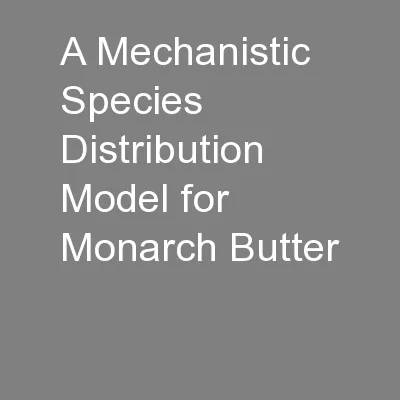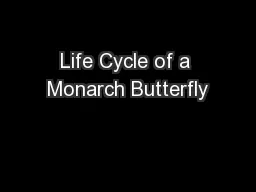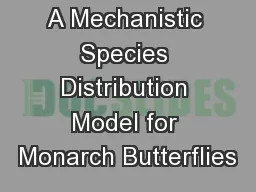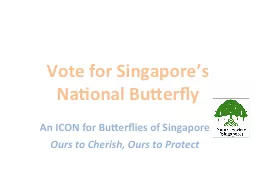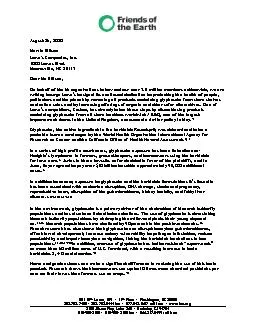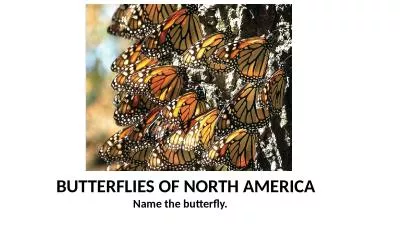PPT-Monarch Butterfly Conservation
Author : tatiana-dople | Published Date : 2019-06-21
Challenges and Opportunities Allison Cowie Stephen Mershon Hannah Rieden Emily Yates httpcache3assetcachenetgc185302115monarchbutterfliesinmotiongettyimagesjpgv1ampcIWSAssetampk2ampdRpvibk8FCIBo2Fdpszbki2F82BqpoCSj4Mbg7fE60F7CTU3D
Presentation Embed Code
Download Presentation
Download Presentation The PPT/PDF document "Monarch Butterfly Conservation" is the property of its rightful owner. Permission is granted to download and print the materials on this website for personal, non-commercial use only, and to display it on your personal computer provided you do not modify the materials and that you retain all copyright notices contained in the materials. By downloading content from our website, you accept the terms of this agreement.
Monarch Butterfly Conservation: Transcript
Download Rules Of Document
"Monarch Butterfly Conservation"The content belongs to its owner. You may download and print it for personal use, without modification, and keep all copyright notices. By downloading, you agree to these terms.
Related Documents



